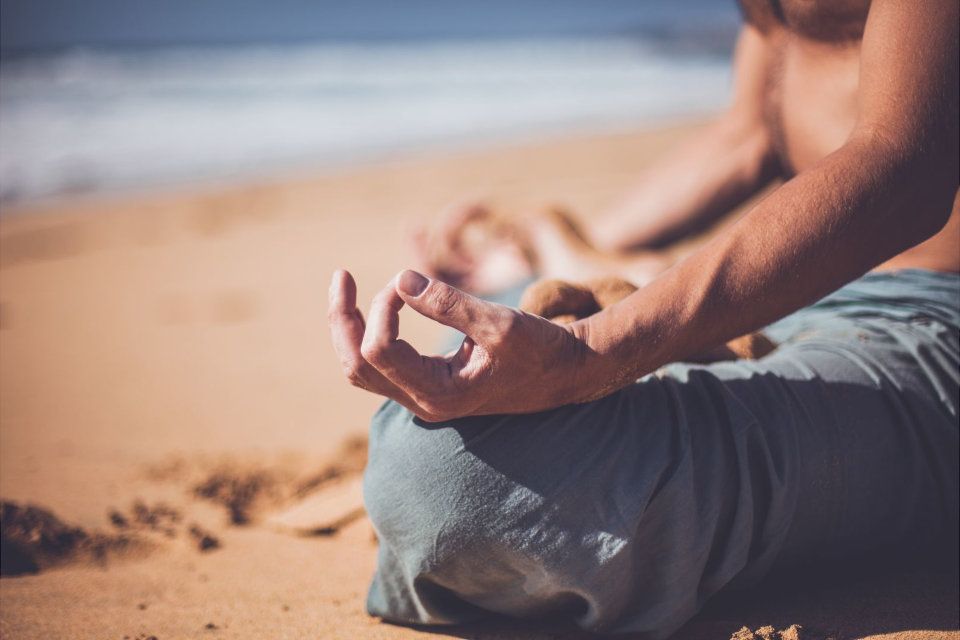
Feeling A Little Frazzled? Time To De-Stress?
In today’s busy world, feeling a little frazzled and stressed is a common companion for many people. Whether it’s work, personal responsibilities, or the constant influx of information, stress can take a toll on our mental and physical well-being.
The good news is that there are effective techniques to help us de-stress and regain a sense of calm and balance.
Here are 5 techniques for de-stressing that can be incorporated into daily routines.
1. Mindfulness Meditation
Mindfulness meditation is a powerful tool for managing stress. This practice involves focusing attention on the present moment and accepting it without judgment.
By paying attention to our thoughts, feelings, and sensations, it’s possible to develop a greater awareness of our mental state and learn to respond to stress in a more balanced way.

Practicing Mindfulness Meditation
- Find a quiet, comfortable place to sit or lie down.
- Close your eyes and take a few deep breaths, focusing on the sensation of your breath entering and leaving your body.
- Pay attention to the present moment, observing your thoughts and feelings without trying to change them.
- If your mind wanders, gently bring your attention back to your breath or the sensations in your body.
- Practice for 5 to 10 minutes daily, gradually increasing the duration as you become more comfortable with the exercise.
Mindfulness meditation has been shown to reduce stress, improve focus, and increase overall well-being. By practicing regularly, it is possible to develop a calmer and more resilient mind.
2. Physical Exercise
Exercise is one of the most effective ways to combat stress. Physical activity helps release endorphins, the body’s natural stress relievers, which can boost mood and reduce anxiety.
Exercise also helps to clear the mind, improve sleep, and increase overall sense of well-being.
Types of Exercise that Can Help with Stress Relief
- Aerobic Exercise: activities like running, swimming, or cycling increase the heart rate and are particularly effective at reducing stress.
- Yoga: combines physical movement with breathing exercises and meditation, promoting relaxation and mental clarity.
- Walking: a simple walk can have a calming effect, providing a break from daily stressors and a chance to clear the mind.
Strength Training: lifting weights or bodyweight exercises can also help relieve stress by focusing energy and building physical resilience.
It is suggested to aim for at least 30 minutes of moderate exercise most days of the week. Even a short burst of physical activity can make a significant difference in how we feel.
3. Deep Breathing Exercises
Deep breathing exercises can be a quick and effective way to calm the mind and reduce stress.
By focusing on breath, we can activate the body’s relaxation response, lowering our heart rate and blood pressure.

Practicing Deep Breathing
- Sit or lie down in a comfortable position.
- Close your eyes and take a deep breath in through your nose, allowing your abdomen to expand.
- Hold your breath for a count of four, then exhale slowly through your mouth.
- Repeat this process for a few minutes, focusing on the rhythm of your breath and the sensation of air moving in and out of your body.
Deep breathing can be done anywhere and at any time, making it a convenient and accessible way to help manage stress.
Whenever you feel overwhelmed, take a few moments to practice deep breathing.
4. Progressive Muscle Relaxation
Progressive Muscle Relaxation (PMR) is a technique that involves tensing and then relaxing different muscle groups in your body. This practice can help reduce physical tension and promote a state of relaxation.

Practicing Progressive Muscle Relaxation
- Find a quiet place to sit or lie down comfortably.
- Starting with your toes, tense the muscles for a count of five, then relax them.
- Move up through your body, tensing and relaxing each muscle group (feet, legs, abdomen, arms, shoulders, neck, and face).
- Focus on the contrast between the tension and relaxation, and notice how your body feels as you release tension.
PMR can be especially effective for relieving physical symptoms of stress, such as muscle tightness and headaches.
Regular practice can help us become more aware of where we hold tension in our body and how to release it.
5. Engaging in Hobbies and Creative Activities
Taking time to engage in hobbies and creative activities can be a great way to de-stress and bring some fun into our life.
Whether it’s painting, gardening or cooking, doing something you love can help shift your focus away from stressors and give you a sense of accomplishment and satisfaction.
Making time for hobbies and creative pursuits in our daily routine, even if just for a few minutes, can have a positive impact on our mental health and well-being.
Shake off That Stress
Stress is an inevitable part of life, but it doesn’t have to overwhelm us. By incorporating some of these 5 de-stressing techniques – mindfulness meditation, physical exercise, deep breathing exercises, progressive muscle relaxation, and engaging in hobbies – we can build resilience against stress and enhance our overall quality of life.
Experiment with different techniques to find what works best for you and remember that taking care of our mental and emotional health is just as important as taking care of our physical health.
By prioritising self-care and making time for relaxation, we can create a more balanced and fulfilling life.
